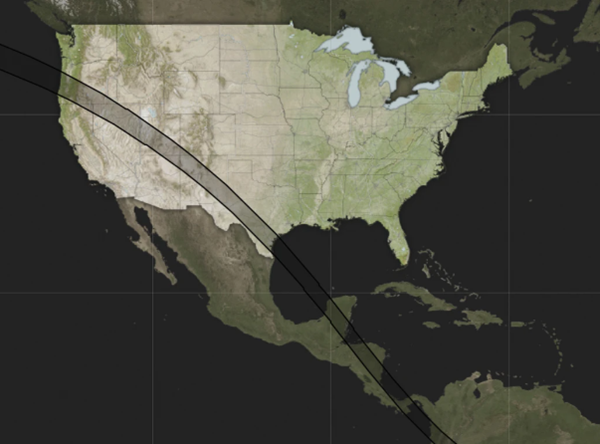Saturday's partial solar eclipse turned out to be an elusive event when increasing clouds encroached on local attempts to get glimpse of a crescent sun for a few hours.
South of the Ohio River, skywatchers had better luck spotting the eclipse before broken clouds turned into a solid gray mass by afternoon. By noon, the moon blocked about 60 percent of the sun's disk before it receded through the afternoon.
Meanwhile, a rare “ring of fire” eclipse of the sun was a spectacular show for millions of people in western U.S. states and then a band of Central and South American countries. They watched as the moon moved into place and blocked out all but a brilliant circle of the sun’s outer edge.
Unlike a total solar eclipse, the moon doesn’t completely cover the sun during a ring of fire eclipse. When the moon lines up between Earth and the sun, it leaves a bright, blazing border.
The entire eclipse — from the moment the moon starts to obscure the sun until it’s back to normal — lasted 2 1/2 to three hours at any given spot. The ring of fire portion was from three to five minutes, depending on the location.
Saturday’s U.S. path: Oregon, Nevada, Utah, New Mexico and Texas in the U.S., with a sliver of California, Arizona and Colorado. Then: Mexico’s Yucatan Peninsula, Belize, Honduras, Nicaragua, Costa Rica, Panama, Colombia and Brazil. Much of the rest of the Western Hemisphere got a partial eclipse.
NASA and other groups livestreamed the event.
In the U.S., some eclipse watchers traveled to remote corners of the country to try to get the best view possible while those in Albuquerque got a double treat as the eclipse coincided with an international balloon fiesta that typically draws tens of thousands of spectators and hundreds of hot air balloon pilots from around the world.
Many parts of the Ohio Valley will be part of another total eclipse on April 8, 2024, bring the same excitement and swell of visitors that occurred in 2017.
This photo taken in Colombia was similar to the view in western Kentucky on Saturday.
(AP Photo Ivan Valencia)
Map shows where skywatchers could see a rare "ring of fire" for about four minutes. (Map courtesy NASA)
Advertisement
Partial eclipse dimmed locally by clouds
Advertisement
Latest State & National
State & National
15 hours ago
State & National
17 hours ago
State & National
18 hours ago
State & National
19 hours ago
State & National
yesterday
ADVERTISEMENT
Most Read >
ADVERTISEMENT
Latest State & National
State & National
15 hours ago
State & National
17 hours ago
State & National
18 hours ago
State & National
19 hours ago
State & National
yesterday
Advertisement
ADVERTISEMENT






